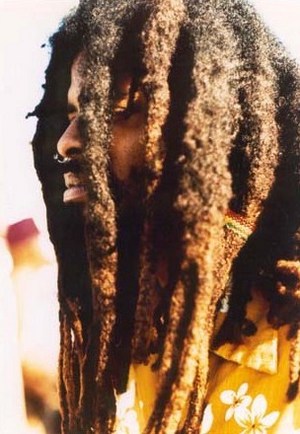When I was in my teens I discovered a world of music outside the mainstream top 40. I began to listen to independent artists, classical music, world music from other cultures, and then I stumbled upon reggae music. The infection beats and rythms echoed happiness, praise, sorrow, poverty and life lessons that would later intrigue and fascinate me. Reggae music lead me to a curiosity about Rastafari, and introduced me to the history of this way of life and religious beliefs.
“Glory be to the Father and to the Master of Creation.
As it was in the beginning is now and ever shall be.
World without end: Jah Rastafari: Eternal God Selassie I.” ~ Rastafari Prayer
Rastafari is More than the Reggae Music that most of us are familiar with. And, although they play key roles in the history and beliefs of the Rastafarians, it is also more than just dreadlocks and ganja. Rastafari is a way of life and a philosophy based on a blend of Christianity and Black Messianic Judaism, combined with their unique interpretations of the Bible and historical figures. There is no “ism”, it is just Rastafari. And followers of Rastafari are called “Rastafarians”.
There are approximately 1 million Rastafarians worldwide. No comprehensive set of doctrines can be found on Rasta theology. Instead, much is left to the interpretation and understanding of the Rastafarian follower based on history and beliefs passed down through generations. Rastafarians are monotheists, who believe in a singular God whom they call Jah. Jah is seen as the Holy Trinity of God the Father, God the Son and the Holy Spirit.
Haile Selassie I
Crowned as King of Ethiopia in 1930, Ras Tafari Makonnen took the name Haile Selassie, meaning “Might of the Trinity.” Haile Selassie is regarded by Rastafarians as the second coming of Jesus, and the fulfillment of the prophecy of Marcus Garvey, who is believed to be the father of Rastafari which began in the slums of Kingston, Jamaica in the 1920s. Rastafarians also believe that Haile Selassie’s coming was prophesied in the Book of Genesis and the Book of Revelation. He remains the God and King of the Rastafari beliefs.
The Name
Rastafari comes from the combination of two words, “Rasta”, from the Amharic “Ras” meaning head in Ethiopian; and “Tafari”, the pre-regnal name given to Haile Selassie.
I an I
“I and I” or “InI”, is a term used in place of “we” or “you and I” to indicate oneness with God and that all are considered equal under God. No person is more privileged than another, God is in all human beings and it is meant to stress the collective unity of all people.
Marcus Garvey
Considered by Rastafarians to be the reincarnation of Saint John the Baptist, Marcus Mosiah Garvey, Jr., among other things, remains the national hero of Jamaica. He is considered to be a prophet for his frequent statements indicating that the crowning of a black king in Africa would signify their day of deliverance. Rastafarians were greatly influenced by his beliefs, particularly when it came to the later crowning of Haile Selassie I of Ethiopia in 1930. Marcus Garvey never identified himself with Rastafari however, he was raised a Methodist and later in life would become a Catholic.
The Bible
Although they believe much of the Bible has been distorted, Rastafarians accept the Bible and prefer passages in harmony with their specific beliefs. The interpretation of the Bible in an Afrocentric manner is a result of their divine inspiration and perspective derived from His Imperial Majesty (H.I.M.) Haile Selassie I.
Ganja (Cannabis)
Used to produce psycho-spiritual effects, ganja is not just part of the belief, it is a path to enlightenment and a main part of socio-religious functions. Rastafarians believe that the use of ganja or “herb” is Biblically based as mentioned in Genesis 1:12, Proverbs 15:17 and Psalm 104:14.
Dreadlocks
Rastafarians believe that the dreadlocks are the receptors for the divine inspiration of Jah. The most distinctive physical characteristic of the Rastafarian, the dreadlock is based on the Biblical injunction against cutting hair, especially for those who dedicate their lives to Jah as Nazerites. The dreads represent the strength and biblical symbolism of the Lion of Judah, since dreads give off the appearance of a lion’s mane.
In Closing
I hope that I have been able to enlighten some to a few of the intricacies and history of the Rastafari. It is a fascinating way of life, and belief, that many are not familiar with. I encourage you to read more about Rastafari, as there is a lot more detail and history available than what I have provided as a summary in this article.
Sources: Conversations with a Rastafarian (thank you Sylvester), Wikipedia
Read more from this author here.




